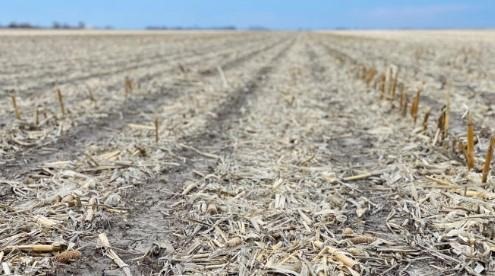By Ben Adle
The midwestern Corn Belt — which roughly covers parts of Indiana, Illinois, Iowa, Missouri, Nebraska and Kansas — will be “unsuitable” for cultivating corn by 2100 if climate change continues on its current trajectory, a new study finds.
“The future climate conditions … will significantly reshape biophysical suitability across the Central and Eastern U.S., causing a near collapse of corn cultivation in the Midwestern U.S. by 2100,” the study, published in Environmental Research Letters, concludes.
Using climate and soil data, Emory University environmental studies professor Emily Burchfield modeled where crops would be successfully grown in a warmer future. Burchfield found that under scenarios with high or moderate greenhouse gas emissions, the climatic conditions necessary to grow corn, soy, alfalfa and wheat will all shift notably northward, “with the Corn Belt becoming unsuitable to the cultivation of corn by 2100.”

Cornstalk residue in a strip-tilled Nebraska farm field in 2021. (Lukas Fricke/Handout via Reuters)
Burchfield’s paper suggests that changes to the way crops are grown will be necessary to continue corn farming in the United States.
“These projections may be pessimistic because they don’t account for all of the ways that technology may help farmers adapt and rise to the challenge,” Burchfield said in a press release from Emory.
In fact, Midwestern farmers have already been successfully adapting to climate change.
Click here to see more...